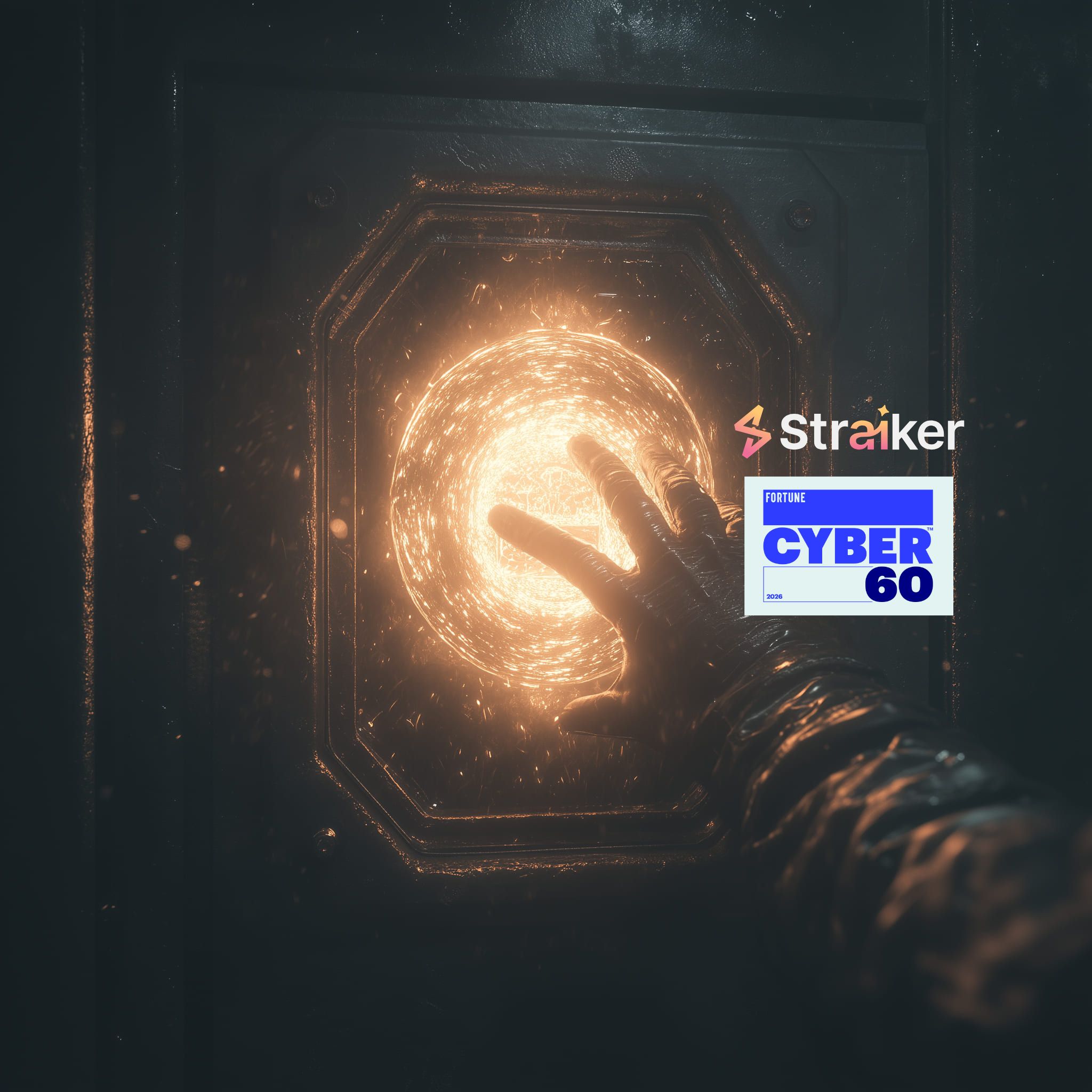AI Red Teaming vs. Traditional Red Teaming: What Security Teams Need to Know
Learn why AI red teaming is different and compares three approaches that security leaders are weighing today.


Let’s assume that as of today, every software product or service has AI integrated into it, okay? So, with that in mind, when I encourage you to perform AI pentesting, that means you need to pentest your AI, not pentest with AI because you won’t find or understand the risks of your newly re-structured LLM-powered application if we look at traditional OWASP Top 10.
This is because AI has changed how applications are built and operated. Agents plan, call tools, browse, write, and act. They interact with business systems, data lakes, MCP servers, and third-party APIs in ways that look nothing like a classic web or enterprise app. That shift breaks the old assumptions of red teaming.
This post explains why AI red teaming is different, and compares three approaches that security leaders are weighing today: Straiker’s autonomous, agentic red teaming, a generic example of an AI red teaming company that retrofits traditional methods, and two respected traditional providers, Bishop Fox and Synack.

Traditional application security red teaming leaders
Two well known names in offensive security are Bishop Fox and Synack. Both bring strong programs, proven methods, and platforms for ongoing testing at scale.
Bishop Fox is recognized for deep offensive research, classic adversary simulation, and a continuous testing platform. Strengths include mature methodology, broad coverage across web, mobile, and cloud, and program visibility that goes beyond static reports. For agentic targets, they can exercise endpoints and infrastructure. The depth needed to test agent planning and tool orchestration usually requires additional agent aware coverage.
Synack is known for a vetted global researcher community and a platform that supports continuous penetration testing. Strengths include scale, flexible engagement, and dashboards that align with enterprise workflows. For classic surfaces and APIs this delivers solid results. As with any traditional approach, multi step agent behavior and runtime tool misuse should be scoped explicitly to avoid gaps. Their services are starting to include AI in their pentesting capabilities.
Why AI red teaming is needed
Traditional tests were designed for static inputs, fixed workflows, and known trust boundaries. Agentic AI apps introduce moving parts. Tools are granted on demand. Memory stores shape future behavior. Retrieval pipelines can import untrusted content that becomes instructions. A single prompt is rarely the whole story. Real incidents often involve multi step planning, cross system pivots, and subtle violations of business intent that do not show up in a single response.
An AI red team must think like an agent and act like an attacker. It needs to plan toward objectives, chain actions across tools, handle state and memory, and validate impact in business terms. That is the core reason a purpose built approach matters. A further differentiator is model strategy: some vendors orchestrate existing models (Claude, Grok, ChatGPT, DeepSeek) while only a few (because it’s extremely expensive) train their own proprietary models with embedded adversarial intelligence.
Generic AI red teaming that retrofits traditional methods
Many startups are appearing on the market and are offering to adapt classic penetration testing and rebrand it for AI. These efforts often begin with jailbreak libraries and point in time prompts. They can be useful for early model hygiene. They also have common limits. Tests tend to be single turn. The focus stays on the model rather than the tool and memory layers. Impact is described as broken prompts rather than objective proof of harm. Results age quickly as orchestration, tools, and data shift.
If you run a simple chatbot that only answers questions, retrofits may cover the basics. If your enterprise is starting to test AI agents or your workload is agentic, you will likely need a method that understands plans, tools, and state.
Straiker’s autonomous, agentic AI red teaming with Ascend AI
Straiker focuses on the way agents actually work. Our red team agents operate autonomously inside the same orchestration patterns as your production systems. They plan, call tools, browse, use RAG pipelines, and write to memory. Objectives are defined in business terms, such as moving funds without approval, posting a record to an external channel, or exfiltrating sensitive fields from a private index.
Ascend AI uses a two agent design at the heart of our red team engine. A Discover Agent maps how your application really behaves in context, including available tools, data sources, and infrastructure surfaces. An Attack Agent then executes adaptive campaigns with unaligned, fine tuned, or frontier models to pressure test the pathways the Discover Agent uncovered. The red team engine is separate from our runtime guardrails so you can test without altering production protections and you can deploy guardrails without revealing how the tests work. We keep this architecture high level by design.
Evidence is central. Ascend AI provides full traceability for every finding. You can follow the prompt history, tool calls, retrieved content, intermediate reasoning, and the final impact. Our Chain of Threats forensics view lets teams see what risk category failed, how many turns it took, which strategies were tried, what models were involved, and which tools were exercised. We also provide a threat matrix that summarizes attack success by category and technique. The dashboard in Ascend shows this at a glance with attack success rates, blocks, risk score, and recommended fixes that can be validated on the next run.
Three ideas guide the work.
- First, objective based testing that measures end to end impact.
- Second, multi hop reasoning that can pivot from prompt injection to tool misuse to policy evasion.
- Third, continuity that matches how quickly AI features and datasets change. Findings are delivered with evidence, reproducible test cases, and clear mapping to the components that must be fixed.
How to choose the red teaming solution for your enterprise
Start by sizing the AI surface. If you are mostly operating AI chatbots, model-centric checks may cover early risks. If teams are building copilots and agentic apps that plan, call tools, retrieve data, and write to memory, you will need agent-aware red teaming. Clarity on scope and your affinity for agents lets you build a solution that is both robust and right-sized.
Keep traditional partners focused on perimeter, infrastructure, and standard application risk. For many programs the best path is a pairing. Use Bishop Fox or Synack to cover the breadth of classic surfaces at enterprise scale. Use Straiker Ascend AI to cover the agent core where prompts, tools, memory, and orchestration meet.
A common problem is that once multiple vulnerabilities are found, organizations often don’t have time to fix them that sometimes taking months so a key extra value is choosing a red-team solution that can also help mitigate and close the loop (for example, via runtime guardrails and prioritized remediation).
What good looks like
A credible AI red team offering should demonstrate five traits.
- It should define business objectives and measure impact against them.
- It should plan and adapt across multiple steps.
- It should test the full runtime from model to tool and memory.
- It should run continuously and age well as your environment changes.
- It should deliver evidence that engineers and product teams can act on, with full traceability and forensics that stand up in reviews.
Bottom line
AI red teaming is not a rename of penetration testing. It is a response to systems that think and act. If your applications behave like agents, your testing must do the same. Pair specialized agentic testing with trusted traditional coverage. The result is a complete view, from the edge of your estate to the decisions your AI makes inside a workflow.
If you want to get a risk assessment of your AI chatbots, copilots, or agents, we're ready for you.
Let’s assume that as of today, every software product or service has AI integrated into it, okay? So, with that in mind, when I encourage you to perform AI pentesting, that means you need to pentest your AI, not pentest with AI because you won’t find or understand the risks of your newly re-structured LLM-powered application if we look at traditional OWASP Top 10.
This is because AI has changed how applications are built and operated. Agents plan, call tools, browse, write, and act. They interact with business systems, data lakes, MCP servers, and third-party APIs in ways that look nothing like a classic web or enterprise app. That shift breaks the old assumptions of red teaming.
This post explains why AI red teaming is different, and compares three approaches that security leaders are weighing today: Straiker’s autonomous, agentic red teaming, a generic example of an AI red teaming company that retrofits traditional methods, and two respected traditional providers, Bishop Fox and Synack.

Traditional application security red teaming leaders
Two well known names in offensive security are Bishop Fox and Synack. Both bring strong programs, proven methods, and platforms for ongoing testing at scale.
Bishop Fox is recognized for deep offensive research, classic adversary simulation, and a continuous testing platform. Strengths include mature methodology, broad coverage across web, mobile, and cloud, and program visibility that goes beyond static reports. For agentic targets, they can exercise endpoints and infrastructure. The depth needed to test agent planning and tool orchestration usually requires additional agent aware coverage.
Synack is known for a vetted global researcher community and a platform that supports continuous penetration testing. Strengths include scale, flexible engagement, and dashboards that align with enterprise workflows. For classic surfaces and APIs this delivers solid results. As with any traditional approach, multi step agent behavior and runtime tool misuse should be scoped explicitly to avoid gaps. Their services are starting to include AI in their pentesting capabilities.
Why AI red teaming is needed
Traditional tests were designed for static inputs, fixed workflows, and known trust boundaries. Agentic AI apps introduce moving parts. Tools are granted on demand. Memory stores shape future behavior. Retrieval pipelines can import untrusted content that becomes instructions. A single prompt is rarely the whole story. Real incidents often involve multi step planning, cross system pivots, and subtle violations of business intent that do not show up in a single response.
An AI red team must think like an agent and act like an attacker. It needs to plan toward objectives, chain actions across tools, handle state and memory, and validate impact in business terms. That is the core reason a purpose built approach matters. A further differentiator is model strategy: some vendors orchestrate existing models (Claude, Grok, ChatGPT, DeepSeek) while only a few (because it’s extremely expensive) train their own proprietary models with embedded adversarial intelligence.
Generic AI red teaming that retrofits traditional methods
Many startups are appearing on the market and are offering to adapt classic penetration testing and rebrand it for AI. These efforts often begin with jailbreak libraries and point in time prompts. They can be useful for early model hygiene. They also have common limits. Tests tend to be single turn. The focus stays on the model rather than the tool and memory layers. Impact is described as broken prompts rather than objective proof of harm. Results age quickly as orchestration, tools, and data shift.
If you run a simple chatbot that only answers questions, retrofits may cover the basics. If your enterprise is starting to test AI agents or your workload is agentic, you will likely need a method that understands plans, tools, and state.
Straiker’s autonomous, agentic AI red teaming with Ascend AI
Straiker focuses on the way agents actually work. Our red team agents operate autonomously inside the same orchestration patterns as your production systems. They plan, call tools, browse, use RAG pipelines, and write to memory. Objectives are defined in business terms, such as moving funds without approval, posting a record to an external channel, or exfiltrating sensitive fields from a private index.
Ascend AI uses a two agent design at the heart of our red team engine. A Discover Agent maps how your application really behaves in context, including available tools, data sources, and infrastructure surfaces. An Attack Agent then executes adaptive campaigns with unaligned, fine tuned, or frontier models to pressure test the pathways the Discover Agent uncovered. The red team engine is separate from our runtime guardrails so you can test without altering production protections and you can deploy guardrails without revealing how the tests work. We keep this architecture high level by design.
Evidence is central. Ascend AI provides full traceability for every finding. You can follow the prompt history, tool calls, retrieved content, intermediate reasoning, and the final impact. Our Chain of Threats forensics view lets teams see what risk category failed, how many turns it took, which strategies were tried, what models were involved, and which tools were exercised. We also provide a threat matrix that summarizes attack success by category and technique. The dashboard in Ascend shows this at a glance with attack success rates, blocks, risk score, and recommended fixes that can be validated on the next run.
Three ideas guide the work.
- First, objective based testing that measures end to end impact.
- Second, multi hop reasoning that can pivot from prompt injection to tool misuse to policy evasion.
- Third, continuity that matches how quickly AI features and datasets change. Findings are delivered with evidence, reproducible test cases, and clear mapping to the components that must be fixed.
How to choose the red teaming solution for your enterprise
Start by sizing the AI surface. If you are mostly operating AI chatbots, model-centric checks may cover early risks. If teams are building copilots and agentic apps that plan, call tools, retrieve data, and write to memory, you will need agent-aware red teaming. Clarity on scope and your affinity for agents lets you build a solution that is both robust and right-sized.
Keep traditional partners focused on perimeter, infrastructure, and standard application risk. For many programs the best path is a pairing. Use Bishop Fox or Synack to cover the breadth of classic surfaces at enterprise scale. Use Straiker Ascend AI to cover the agent core where prompts, tools, memory, and orchestration meet.
A common problem is that once multiple vulnerabilities are found, organizations often don’t have time to fix them that sometimes taking months so a key extra value is choosing a red-team solution that can also help mitigate and close the loop (for example, via runtime guardrails and prioritized remediation).
What good looks like
A credible AI red team offering should demonstrate five traits.
- It should define business objectives and measure impact against them.
- It should plan and adapt across multiple steps.
- It should test the full runtime from model to tool and memory.
- It should run continuously and age well as your environment changes.
- It should deliver evidence that engineers and product teams can act on, with full traceability and forensics that stand up in reviews.
Bottom line
AI red teaming is not a rename of penetration testing. It is a response to systems that think and act. If your applications behave like agents, your testing must do the same. Pair specialized agentic testing with trusted traditional coverage. The result is a complete view, from the edge of your estate to the decisions your AI makes inside a workflow.
If you want to get a risk assessment of your AI chatbots, copilots, or agents, we're ready for you.
Click to Open File
similar resources

Secure your agentic AI and AI-native application journey with Straiker
.avif)










